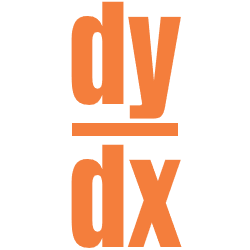Method: Global Extrema
The method you will use to find global extrema is almost identical to the 1 st Derivative Test method. The nice part about global extrema method is that you will not have to apply the actual 1 st Derivative Test step (number line game).
Step 1: Find the 1 st Derivative, .
Step 2: Find the critical values of the equation.
Critical values are the places where the derivative equals zero, , or does not exist , .
– To look for critical values where , take your derivative, , and set it equal to zero and solve for x.
– To look for critical values where, you want to look for places that would “break math”. These “breaking math” locations are most often going to occur when you have a fraction , and you have to consider when you would get division by zero. Division by zero is an example of “breaking math”, you are not allowed to divide by zero. Whatever x-value would cause that to happen would “break math”.
To help yourself identify fractions in your derivative, look for negative exponents . If you see a negative exponent you will want to apply your Laws of Exponents rewrite in order to turn all your negative exponents positive . I always say negative exponents are great for doing calculus they suck for doing algebra .
– Other examples of “breaking math” would be square roots of negative numbers , logarithms of negative numbers , or x-values that were not in the domain of your original equation, .
– If you have a closed interval, [ a , b ], then the endpoints of that interval would also be places where, , and so you would want to consider them as critical values as well.
REMEMBER : Check that all of your critical values are actually inside the closed x-interval , [ a , b ], you are working with. It is not uncommon to find a critical value that does not exist in your x-interval . If this happens you would throw that critical value away because you are only concerned about what is happening inside your given x-interval .
Step 3: Plug the x-values of your critical values and your endpoints of your closed interval, [ a , b ], back into your original equation, . This will give you the y-values that go with these x-values .
Step 4: Draw conclusions.
– The largest y-value , is the winner of the Absolute/Global Max award.
The answer would be given like this: “The absolute/global max is y-value , and it occurs at these x-value(s) .”
Remember you could have an Absolute/Global max ( y-value ) that occurs at multiple locations ( x-value ).
– The smallest y-value , is the winner of the Absolute/Global Min award.
The answer would be given like this: “The absolute/global min is y-value , and it occurs at these x-value(s) .
Again, you could have an Absolute/Global min ( y-value ) that occurs at multiple locations ( x-value ).
